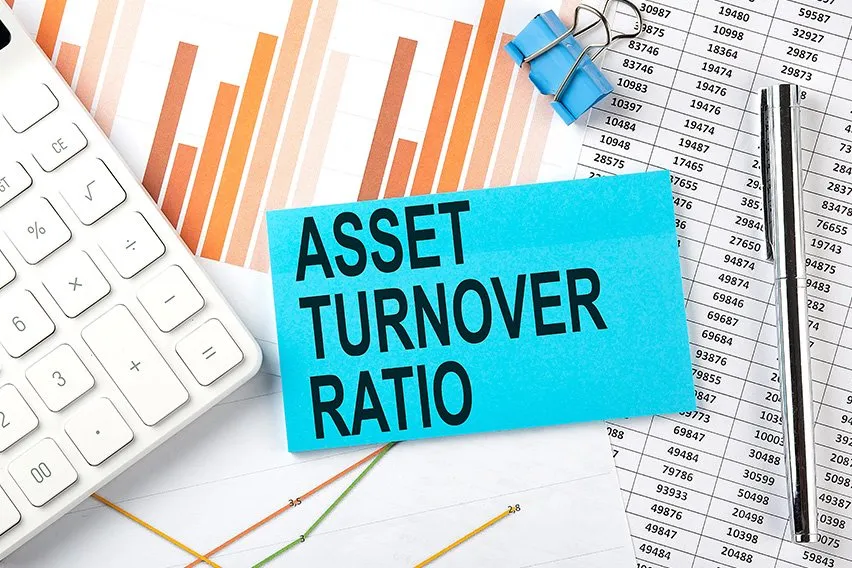6 Types of Activity Ratios: Explained

Activity ratios measure the efficiency of a business in using and managing its resources to generate maximum possible revenue. The different types of activity ratios show the business’ ability to convert different accounts within the balance sheet such as capital and assets into cash or sale.
These ratios are also known as asset management ratios or performance/ efficiency ratios.
What this article covers:

What Is Meant by Activity Ratio?
The activity ratios show the connection between sales and a given asset. It indicates the investment in one particular group of assets and the revenue the assets are producing.
Assets such as raw materials and machinery are introduced to generate sales and thereby, profits. The activity ratios show the speed at which the assets are converted into sales.
Activity ratios play an active role in evaluating the operating efficiency of the business as it not only shows how the company generates revenue but also how well the company is managing the components in its balance sheet.
What Are the Different Activity Ratios?
Accounts Receivable Turnover Ratio
The accounts receivables turnover ratio, also known as debtor’s ratio, is an activity ratio that measures the efficiency with which the business is utilizing its assets. It measures how many times a business can turn its accounts receivables into cash.
It is calculated by dividing the net credit sales during a specific period by the average accounts receivables. The average accounts receivable is calculated by adding the value of the accounts receivable at the beginning of the desired period to the value at the end and then dividing it by two.
Accounts Receivable Turnover = Net Credit Sales / Average Accounts Receivable
The ratio indicates the efficiency with which the business is able to collect credit it issues its customers.
While a high ratio may indicate the company operates on a cash basis or has quality customers that pay off their debts quickly, a low ratio can suggest a bad credit policy and poor collecting process. It helps in assessing if its credit policies are helping or hurting the business.
Working Capital Ratio
The working capital turnover ratio indicates a business effectiveness in utilizing its working capital. Working capital is the total amount of current assets minus the current liabilities.
The ratio is calculated by dividing the net sales by the working capital. The ratio helps you figure out the net annual sales generated by the average amount of working capital during a year.
Working Capital Ratio = Net Sales / Working Capital
A high working capital ratio shows that the business is efficiently using its short-term liabilities and assets for supporting sales. A low ratio could indicate bad debts or obsolete inventory.
Asset Turnover Ratio
The asset turnover ratio measures the efficiency with which a company utilizes its assets to generate sales. The ratio calculates net sales as a percentage of assets.
Asset Turnover Ratio = Sales / Average Total Assets
This ratio is calculated at the end of a financial year and can vary widely from one industry to another. The higher the asset turnover ratio, the better the company is performing.
The asset turnover ratio is also a primary component of DuPont analysis. Started by the DuPont Corporation in the 1920s, the analysis helps in understanding how companies can increase return for their shareholders. It breaks down Return on Equity (ROE) into asset turnover, profit margin and financial leverage.
ROE = Profit Margin x Asset Turnover x Financial Leverage
Fixed Asset Turnover Ratio
This ratio measures the business’ ability to generate sales from fixed assets such as property, plant and equipment. To calculate the ratio, you need to divide the net sales by the total property, plant, and equipment net of accumulated depreciation.
Fixed Asset Turnover Ratio = Net Sales / (Fixed Assets – Accumulated Depreciation)
A high turnover ratio indicates the assets are being utilized efficiently for generating sales.

Inventory Turnover Ratio
The inventory turnover ratio details the efficiency with which inventory is managed. The ratio shows how well the business manages its inventory levels and how frequently they are replenished.
It is calculated by dividing the cost of goods sold by the average inventory for the same period.
Inventory Turnover Ratio = Cost of Goods Sold / Average Inventory
A low inventory turnover ratio may indicate overstocking, poor marketing or a declining demand for the product. A high ratio is an indicator of good inventory management and a higher demand for the product.
Days Payable Outstanding
The ratio measures the number of days a business takes to pay its invoices and bills to its vendors, suppliers or other companies. It is calculated by:
Days Payable Outstanding = Accounts Payable / (Cost of Sales/ Number of Days)
The number of days is taken as 90 days for a quarter or 365 days for a year. The ratio indicates how well the cash flow is being managed.
A ratio is usually beneficial for the business. When a business takes longer to pay its bills, it has available cash for a longer period for managing operations, producing more goods and its short-term investments. However, taking too long to pay can result in unhappy creditors and refusal of further credit. It can also indicate that your business is struggling to pay its creditors.
A low ratio indicates that the business is either not utilizing its credit period efficiently or has short-term arrangements with creditors.
Each of these ratios provides an insight into the business efficiency and tells you where you need to improve. So if you’re falling short of cash, use the activity ratios to identify the problem areas and fix them.
RELATED ARTICLES

 Percentage of Completion Method Decoded
Percentage of Completion Method Decoded 9 Accounting Tips for Small Businesses
9 Accounting Tips for Small Businesses Restaurant Accounting: A Step by Step Guide
Restaurant Accounting: A Step by Step Guide What Is Non-Operating Income? 3 Things You Need to Know
What Is Non-Operating Income? 3 Things You Need to Know Liquidity in Small Business: What It Means and Why It Matters
Liquidity in Small Business: What It Means and Why It Matters What Is Inventory Valuation and Why Is It Important
What Is Inventory Valuation and Why Is It Important